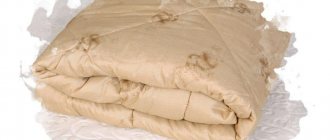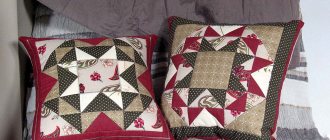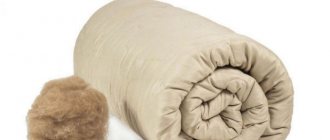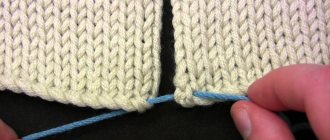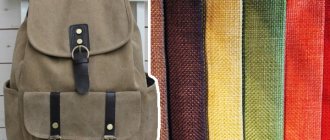Blankets with artificial filling inside have many advantages over their down or cotton counterparts. Thus, a padding polyester blanket is lighter in weight, it is much more convenient to wash than, for example, a down blanket, and it dries quite quickly. It is also important that the synthetic winterizer is hypoallergenic, it does not take up much space, so you can take it with you even on a hike. Today we propose to talk about how to sew a blanket on padding polyester with your own hands, how to choose high-quality material, how to care for the finished product so that it lasts as long as possible without losing its positive properties. But first things first!
What is synthetic winterizer?
Over the years, synthetic fillers have enjoyed surprising popularity. Perhaps the leader among artificial materials can be called synthetic winterizer. Its popularity can easily be explained by its low cost and ease of maintenance. It is indispensable for the production of upholstered furniture and warm clothing, mattresses and pillows, blankets and many other products that accompany a person in everyday life. In general, the concept of “sintepon” is a collective one; it combines three types of material that differ from each other in components, purpose and properties. By the way, padding polyester is sometimes called a synthetic version of batting. Synthetic winterizer is produced in the form of a non-woven fabric; it contains synthetic fibers that were obtained either from primary or secondary raw materials. Let's consider what properties are characteristic of this material, what it looks like, what disadvantages and advantages it has.
Varieties of padding polyester
Today there are three varieties. These are holofiber, sherstepon, synthetic fur. All these types can be called improved versions of the most common padding polyester; they have a number of advantages, because their production technologies have been improved, and additional materials have appeared in their composition. Thus, sherstepon is made from sheep wool and synthetic fibers. Thanks to this, the material turns out to be unusually strong, it is protected from knocking, which allows it to be used as a filler for a superbly light and warm blanket. Suitable for blankets and synthetic feathers. This material is characterized by lightness, softness, and this filler is incredibly warm. That is why, if you are thinking about what and how to sew a blanket from padding polyester, pay attention to this variety, such as padding polyester. The finished product will delight you with the fact that it will not go astray and will last for many years.
General information about work
Sewing a blanket is a painstaking job, and in order not to get confused in all the nuances, it is worth mapping out a plan according to which the process will proceed.
Plan for making a hand quilt:
- Selecting a sample.
- We purchase materials.
- Calculate the markings of the blanket.
- Directly the quilting itself on the machine.
- We quilt the blanket by hand.
- Finish the edges of the quilt.
Obviously, when putting things on shelves, the process becomes less daunting, and even promises pleasant fuss and pleasure.
Production technologies
In order to sew a blanket from padding polyester yourself, you need to choose high-quality material. To do this, you need to familiarize yourself with the methods of its manufacture. Let’s say right away that this filler can be made from both primary and secondary raw materials. Of course, good quality material can only be obtained in the first case. The fact is that when using primary raw materials, pure polyester fibers are used, to which natural fibers are sometimes added, for example wool or cotton. It is important to note that high-quality padding polyester consists of several layers that have different directions. This ensures high strength and durability of the material. Fillers made from recycled materials, of course, are low in price and not particularly high in quality. Often plastic bottles and even disposable tableware are used to make it! Experts note that such material deteriorates very quickly; after a couple of washes, it pills or gets knocked down.
Experts identify three methods for producing such filler as synthetic winterizer. The best material is obtained using the needle-punched method. If you are thinking about sewing a baby blanket from padding polyester, pay attention to the filler obtained using this technique. Wear-resistant filler is also obtained by using the so-called thermal method. In this case, the material is produced under high temperatures. The cheapest method is emulsion: synthetic fibers are bonded together using latex glue. The finished fabric is airy and incredibly soft, but cannot boast of particular strength.
How much does it cost and where to buy
The price range is quite large. A small blanket for children can be found for RUB 1,000, while a double blanket for adults can approach RUB 20,000. Buy from an online store or a regular one that sells bedding, the choice is yours. An individual design can be made by a craftsman to order. If you want, it’s easy to make a bonbon blanket yourself; you just need a little persistence.
Positive sides
If you are seriously interested in the idea of sewing a blanket from padding polyester, you need to pay attention to the positive and negative qualities of the material. Among the advantages are its softness and airiness, heat-saving properties. Reviews of this filler often say that it is quite durable and elastic, capable of restoring its original shape. Of course, this is only possible if you choose high-quality material.
Required Tools
When making a blanket you will need the following tools:
- Roulette;
- Tape measure;
- Awl;
- Tailor's pins;
- Threads and needle for basting;
- A piece of chalk, or dry, sharpened soap;
- Sewing machine.
Note! Additional tools may be required at the discretion of the author, but the list presented should be sufficient for simple work.
Scheme with application
Flaws
Of course, even such an excellent filler as padding polyester has a number of disadvantages and weaknesses, which are extremely important to know about. So, if the adhesive method was used during production, allergic reactions may occur. In addition, in such a material the bond between the fibers weakens quite quickly, they disintegrate, which means the product becomes deformed and becomes unusable. It is also important that repeated washing can lead to the fact that the thickness of the material (even of fairly high quality) is reduced by two to three times. Among the disadvantages is a low level of hygroscopicity; such a blanket will not absorb moisture well. In addition, synthetic winterizer is characterized by low air permeability. In order for sleeping under a synthetic blanket to be comfortable, you need to use exclusively natural fabrics for the covering, while choosing a small filler thickness, 10 by 20 millimeters is enough.
Which material is better to choose
It is possible to choose the filler for the product based on personal comfort and even health status, choosing hypoallergenic fabrics and fillers.
Example of quality work
What materials are best to choose when sewing a blanket:
- Feathers and down. Products made from them will be the warmest. Sleeping under such a blanket is warm even in the coldest room. The downside is that over time, the filler can roll off and cause inconvenience and contribute to allergic reactions.
- Wool. This material retains heat well, absorbs moisture and allows air to pass through well, but it can cause allergies.
- Cotton. This filler is also natural, but due to the fact that it is of plant origin, it will not cause allergic reactions. However, such products heat rather weakly, so they are used only in the summer.
- Synthetics. There is an opinion that synthetic material is not comfortable enough to use, but using such a product is no less convenient than any other. Advantages: it is machine washable and does not cause allergies.
It's better to use a typewriter
We sew a blanket from padding polyester!
First of all, you need to decide on the size and shape of the future product. Today, the light industry offers customers more than a hundred different options for blanket sizes. If you are thinking about how to sew a padding polyester blanket, please note that the most common sizes are:
- 120 x 120 cm – for newborns;
- 140 x 110 cm – baby blankets;
- 200 x 150 cm – single blankets.
One-and-a-half and double duvets, Euro sizes, deserve special attention. So, semi-trucks can be 205 x 150 and 215 x 155 centimeters. If you are thinking about how to sew a padding blanket with your own hands for a double bed, choose from sizes 215 x 175, 210 x 180, 200 x 200 centimeters. The Euro size is characterized by parameters such as 200 x 220 and 210 x 220 centimeters.
How to properly sew a blanket from padding polyester? Be sure to take into account the height of the person for whom it is intended and the size of the bed. As for the shape, you can make a round, rectangular, square product or even a heart-shaped blanket from padding polyester!
Training
Once you have decided on the pattern of the future quilt, you can begin the training itself. For this, two pieces of fabric 1x1 meter folded together are suitable. Pieces that are too small should not be used. Below is a rough example for practice. When you have filled all the empty space, start applying a new stitch on top of the already laid stitch.
For training, it is better to choose a thread that is contrasting in tone relative to the fabric, then the stitch will be clearly visible and you will be able to accurately move along the intended lines, which is necessary in the first stages during the first steps. Using quilting gloves will help you better control the process during practice.
Cutting out
Are you thinking about how to sew a padding polyester blanket with your own hands? It is necessary to cut it correctly. Experts advise using wide fabric. The fact is that in this case there will be no seams in the middle of the product. It is necessary to adjust and cut out the surface material both in length and width, usually it depends on the width and pattern applied to the fabric. It is extremely important to add allowances when cutting out. One centimeter will be needed on each side for the seam, from 2 to 15 cm will be needed for fabric shrinkage. This size depends on the quality and size of the blanket. It is important to leave an allowance for quilting. Its value depends on how thick the padding polyester you will use, how often you will place the lines, of course, the higher these indicators, the larger the allowance should be. For example, if you decide to sew a blanket on padding polyester for discharge, you will only need to add about 3 cm of allowance, but if you plan to make a Euro size blanket, voluminous and fluffy, with a large number of stitches, the allowance should be will be at least 10 centimeters.
DIY sewing
Before you finally decide on such a job, you need to carefully weigh all the possible advantages and disadvantages of your choice. But if you start making a product with your own hands, then in the end you are unlikely to regret it - after all, homemade items are always more pleasant to use.
Baby blanket
Advantages:
- Significant savings on your budget, especially if you choose a product with a complex pattern.
- The ability to independently decide on the choice of color, size, shape, quality and safety of the materials used.
- Products made by hand are always imbued with special love, and those who use them will undoubtedly feel it.
Flaws:
- You will have to spend a lot of personal time searching and purchasing the necessary materials.
- This process is quite labor-intensive, especially for those who are doing it for the first time.
- During the first attempts, it is quite possible that you will not be satisfied with the result obtained.
Step-by-step instruction
- After you have determined the length and width of the blanket, cut out a rectangle, square or oval (you can choose the shape yourself) of the size you need from a piece of padding polyester. If you want to sew a multi-layer blanket, you will need two or three layers of filling. How to sew a blanket from padding polyester if its width is less than the width of the future product? Simply cut out a strip of the required size and sew it to the main piece. A simple closed stitch, which seamstresses call “forward needle,” is suitable for this. Of course, you can stitch an additional piece, but this is not at all necessary.
- After this, you need to stack all the layers of padding polyester on top of each other, and then align their edges. If any of the edges protrudes, you should carefully trim it. Using a needle-forward seam, join all layers of filling in the center, the blanket padding along the edge. Please note: the stitches can be quite large, this will not affect the quality of the future product.
- The next step is preparing the coating for the future product. Let's say you decide to make a rectangular blanket. Prepare the fabric - two sheets, leave a few centimeters for allowances, sew three sides of the rectangle and turn it right side out.
- The resulting cover must be carefully ironed, only then can filler be inserted into it. Carefully place the padding polyester inside, straighten it and fasten it. Large stitches or pins are suitable for this purpose. Please note: under no circumstances should you lose a single pin, otherwise you will hardly be able to sleep peacefully under this blanket. Therefore, if you took, for example, 15 pins, at the end of the work there should be exactly 15 of them left! Another condition: the sides of the gasket must perfectly match the side seams of the cover.
- Speaking about how to sew a blanket from synthetic padding polyester, it should be noted that it needs to be stitched along all the side seams, while capturing the padding.
- After this, fold the cut inside on the fourth side, also capturing the filler. Then you need to mark a line at a distance of 10-12 centimeters from all edges and carefully stitch the blanket again.
If you are thinking about how to sew a quilt with padding polyester, you should only carefully stitch it in the middle. You can do this with straight lines or squares, diamonds, making some kind of pattern, playing with the pattern that is applied to the fabric. The distance between the lines should be from 20 to 40 centimeters, and the lines should be neat on both sides of the product. The blanket is ready!
By the way, using the same technology you can make a simple sleeping bag that you can take with you on a long hike. You will also need a synthetic padding pad and two panels. On one of the short sides you will need to make a drawstring, bending 2-3 centimeters. When sewing the second short side and the sides, you will need to sew in the long zipper so that the open end is on the fold. After this, you will need to quilt the blanket, carefully stitch it along the edges, and insert a cord into the drawstring!
Joining workpieces
If lace is used for decoration, it should be sewn around the perimeter of the cover first. Place the holofiber on the table, cover it with the folded front parts of the cover inward. Use needles to pin the edges or baste with stitches. Sew along three sides using a sewing machine, leaving the fourth half unstitched.
Turn the product onto your face so that the filling remains inside. Distribute the holofiber in an even layer. Next, stitch the blankets according to the intended pattern - this stitch will not allow the filling to bunch up during use. Stitch the remaining unfinished fourth side of the blanket.
Caring for synthetic winterizer
Now you know how to sew a blanket from padding polyester. But how to properly care for this product? The fact is that a blanket with such filling requires careful care. Only in this case will it last much longer without losing its positive qualities and properties. First of all, we suggest talking about how to wash a blanket with padding polyester filling. The water temperature in the washing machine should not exceed 40 degrees; the optimal mode for the product is delicate or hand wash. By the way, please note that regular washing powder for padding polyester-based blankets is not suitable. Instead, you should use a liquid product that contains a minimal amount of various chemical components. Don't forget to put tennis balls in the washing machine drum, which will prevent the product's filler from getting lost.
It would be a good idea to use a special cover, so you can prevent any damage to the fabric you used for the surface of the blanket. Products with synthetic padding should be dried on a clothesline in the fresh air. Proper care of your blanket is the key to ensuring that it will serve you for as long as possible without losing its original qualities!




